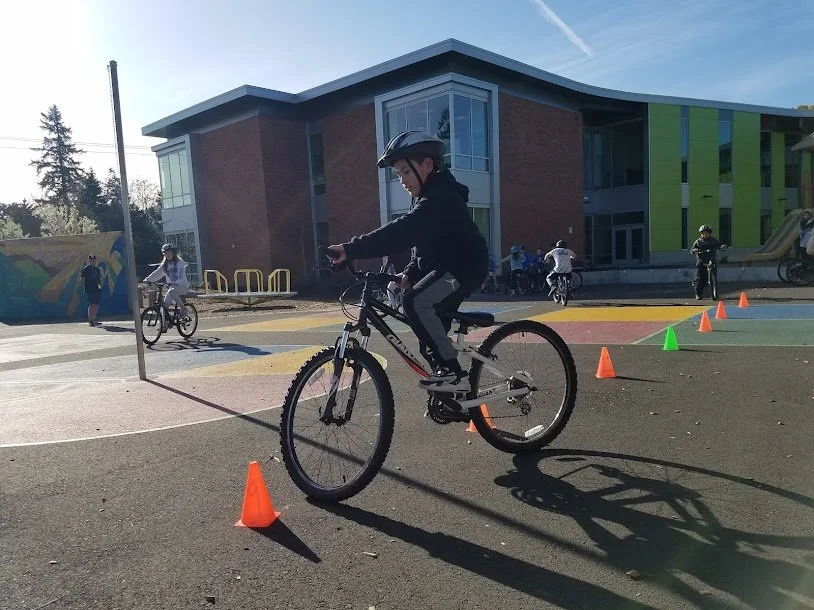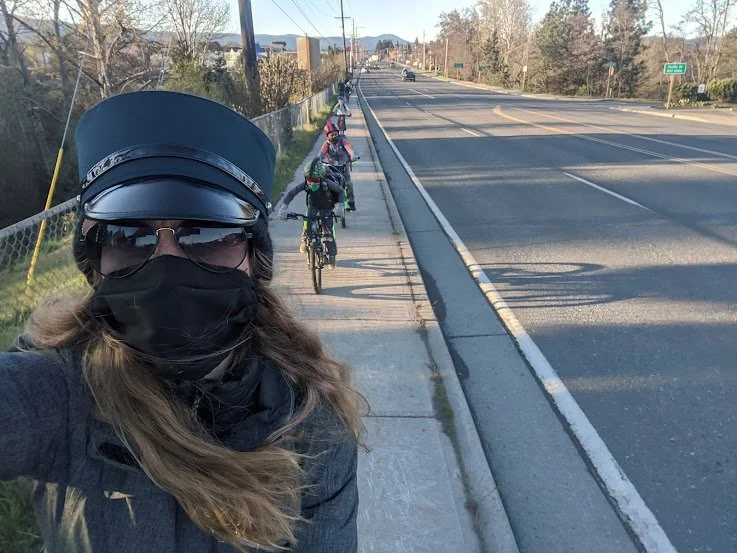What and Why?
Walk and Roll is Hood River County School District’s Safe Routes to School program that will give joy, freedom, independence to our youth through active mobility education and safer infrastructure.This program inspires a culture of walking, rolling and biking to school and afterschool activities for students and caregivers at all 8 schools in the Hood River County School District.To increase walking, rolling and biking to school, we will address a diversity of barriers to families including physical abilities, economic and cultural backgrounds.Concerns about safe streets, intersections and routes to school, will be addressed with better bikeways and walkways for all ages, abilities, incomes and cultural backgrounds. The program manager will build partnerships, educate stakeholders and policymakers and help to secure funding for infrastructure that makes walking and rolling to school safe and convenient in Hood River, Odell, Parkdale, Cascade Locks and the County.
Curriculum and Laws
-
Comfort & Confidence
Above all, we want our students to be comfortable while walking or biking. Even though much of their comfort is related to safer infrastructure. However, until we have a platinum network of seamless sidewalks and bikeways, our youth can learn to feel confident with our current built environment.
All kids will learn how to ride a bike.
5th-8th graders will learn how to be confident with stopping, biking in a straight line, turning, shifting and avoidance maneuvers.

-
Hand Signals
Second to comfort and confidence is predictability. The students will learn why they need to use hand signals and how visual cues are important for street safety.

-
Stop-as-Yield Law
As of 2020, Oregon has a new law that enables people biking to use their momentum while following common sense. For stop signs or flashing red lights, people biking can treat them as a yield, checking for traffic and slowly rolling through.
Watch this video that explains the law.

-
Sidewalks and Crosswalks
There are 4 important laws about sidewalks and crosswalks that are relevant to children and families:
1 - Yield to people walking or in mobility devices as they have the priority on sidewalks, so above all else. If you need to bike on a sidewalk, show them respect with your voice or bell or walk your bike around them.
2 - No E-bikes on sidewalks. Oregon state law prohibits riding an E-bike on the sidewalk. Granted, without a safe bikeway (hello, 12th Street), this is impossible so if you have to, follow #1 above.
3 - City of Hood River restricts riding on the sidewalk in business districts. See #2 above.
4 - When you can ride on a sidewalk, you can also ride in a crosswalk as long as you enter the crosswalk at walking speed and yield to people walking.

-
Spidey Sense
Sometimes, common sense is not the intuitive. Streets, intersections and vehicle traffic are dynamic. Not every situation is the same so "follow the rules of the road" isn't as easy as it sounds.
We teach the kids to use their Spideysense, or heightened awareness and pay attention to their anxiety.
We cannot expect our children to be perfect. What we can do is drive slow and anticipate a child coming out of nowhere.

-
E-bikes
You must be 16 or have a learner's permit to drive an E-bike in Oregon.
Parents, please ride with your children and review basic etiquette and laws before handing over an E-bike. They are incredibly powerful machines that can cause great harm.
In our hilly town, it is important to routinely check the brakes to ensure they are dependable.

Student Benefits of Safe Routes to School
Numerous studies have documented that Safe Routes to School projects and programs can lead to increased walking and bicycling activity among students. But why is it important for communities to make it safer and more convenient for students to walk and bike to school?
Increased Safety for StudentsReduction in Absences and TardinessHealthier StudentsImproved Academic PerformanceCleaner Air, Fewer Asthma ComplicationsGreater ConfidenceStronger Social Connections
Community Benefits
Students and their families are not the only ones who benefit when we encourage and enable young people to walk or bike to school safely.
In many ways, Safe Routes to School benefits the whole community. Communities that prioritize active transportation can see improvements such as:
Reduced Traffic CongestionStronger Sense of CommunitySafer StreetsLower CostsImproved AccessibilityEconomic Gains





